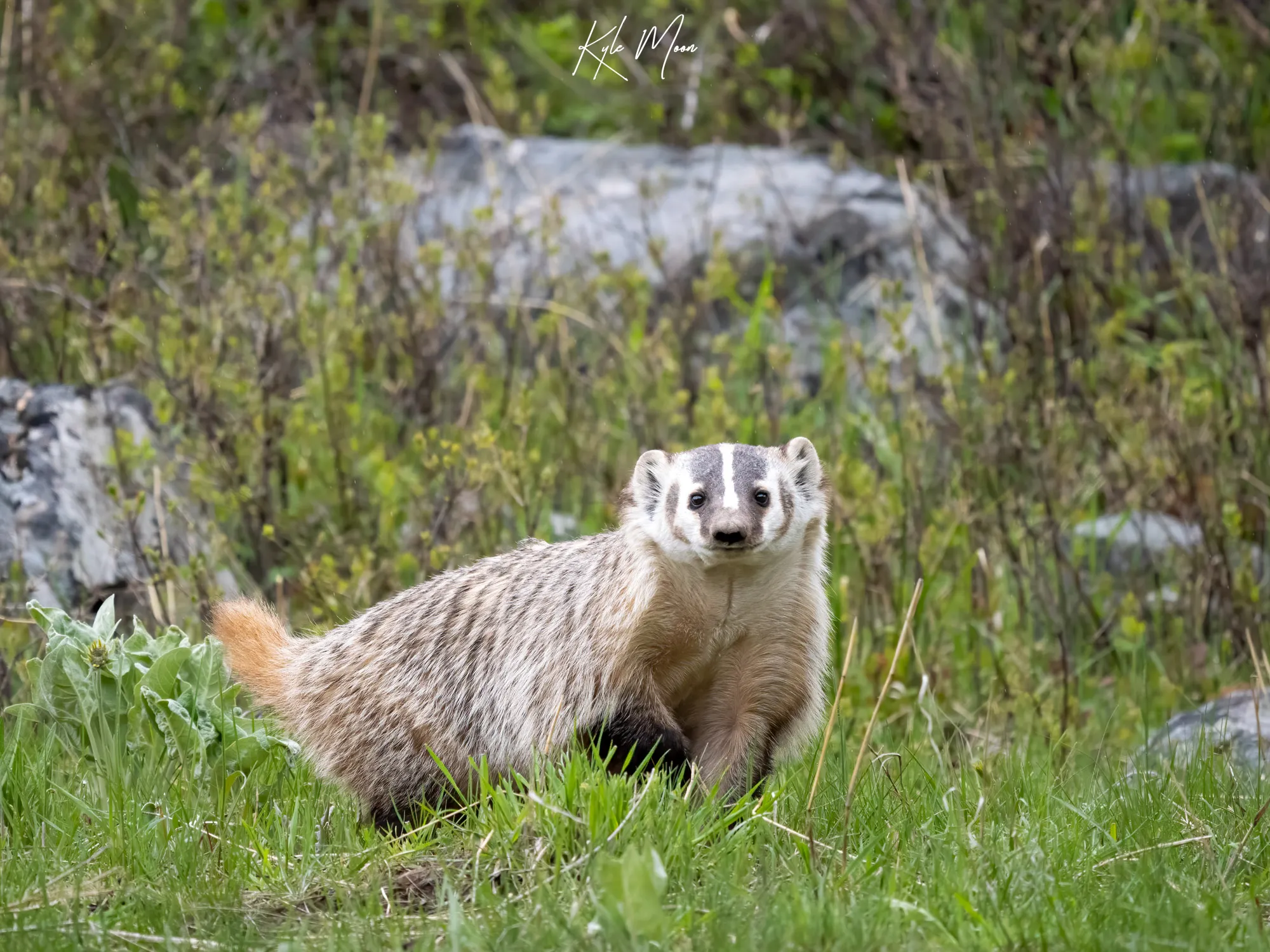American Badgers: Where They Are & How To Find Them

To see a badger, start by asking yourself if they live where you are and if there is suitable habitat to support them. American badgers’ distribution in the U.S. ranges from the entire West Coast to the Great Lakes and down diagonally towards Texas. Our next step in search of badgers is figuring out what habitat they utilize. Here in Yellowstone, we can see badgers in open, sparse forests, but more often than not, you’ll find them in the sagebrush flats–vast, open areas covered with low-lying sagebrush plants.
Why might we find badgers in the sagebrush flats? Well, generally animals live near a food source and that is precisely the case with badgers. Have you ever gone for a hike in the sage and noticed cavities in the ground with dirt near the entrance of the holes? These signs are likely the work of Uinta ground squirrels. And where you have ground squirrels, you will have badgers. Badgers are carnivores—meat eaters—and specialize in excavating ground squirrels from underground tunnel systems using their long, front claws. They will also prey on other small mammals, such as voles, rats, mice, and pocket gophers, and may also consume small birds and reptiles.
So now we know where badgers live and what they eat, but what about the best time of day to see them? Spotting badgers can be tricky as they are primarily nocturnal. That certainly doesn’t mean you can’t find one; certain times of year are better for spotting badgers in the daytime. To increase my odds of seeing badgers, I go during spring when the sow (female) badgers work hard to find food to nourish as many as five cubs (or kits)! You can often find mom out there rummaging through the flats in search of prey, and if you’re lucky, you might even see the kits at the entrance of their den!
So we’ve covered where to find badgers and what time of the day/year it’s best to see them. But what if we already knew this and still haven’t seen one? Let me provide you with a few extra pointers to increase your odds of having your first badger encounter.
- Look for wildlife during dawn and dusk when animals are most active.
- Pay attention to the direction of the wind. Badgers have poor eyesight and rely heavily on their olfactory senses and hearing.
- Get a higher vantage point and look down on the landscape instead of being on the same plane as the sagebrush. Remember that badgers are very flat and low to the ground. You have a better chance of seeing a badger moving across the flats when you have more of a bird’s eye view. For example, I climbed up a hill in Lamar Valley with a spotting scope just as dusk approached. I spotted three individual badgers moving across the landscape, likely searching for food. A higher vantage point allowed me to see over the sagebrush and spot the low-profile badgers more easily.
- Listen to your surroundings! Many ground squirrels live in colonies with sentinels looking out for predators. The squirrels know best! If you hear them alarming, keep an eye out—this could mean there is a badger nearby. The same goes for birds. Many birds will warn one another when there is a threat nearby. If you see a bunch of our ground-nesting birds, such as dark-eyed juncos or vesper sparrows squawking in a particular direction, you may want to take a second look and investigate.
- If you come across a badger’s burrow or den during a hike, look for fresh tracks. But remember, if you suspect a sow with kits is using the den, give them space. The mother may feel threatened and potentially attack to protect her kits or move her family to another den. It’s our responsibility to respect their space and ensure their safety.
Lastly, remember that a little patience goes a long way in wildlife spotting. It’s crucial to understand that wildlife is wild and unpredictable, and even with the best strategies, a sighting is not guaranteed. But rest assured, with persistence, you’re sure to have a memorable encounter. So, don’t wait on the couch—get out there, explore, engage your curiosity, and let the thrill of the search unfold!
Blog content and all photos courtesy of Yellowstone Wild Photo/Naturalist guide Kyle Moon

To learn more about Kyle, and the entire Yellowstone Wild Naturalist Guide staff, visit our “About Us” page!




